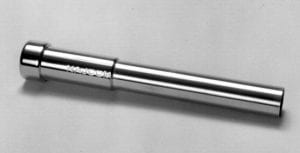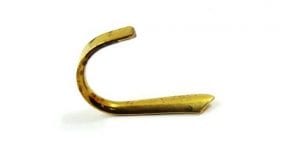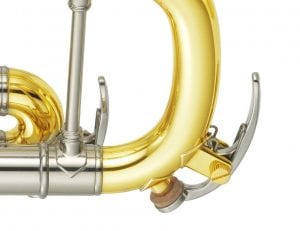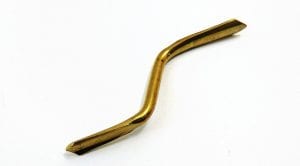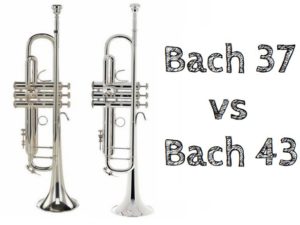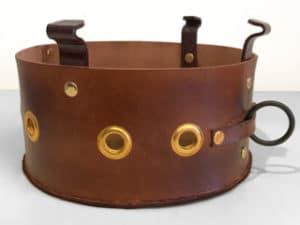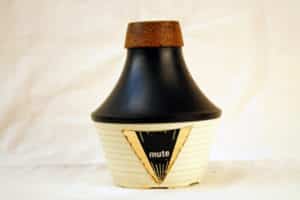As a beginner trumpet player it can be difficult and complicated to know which parts of the trumpets are which, what they do, and how you need to maintain them in order to keep your trumpet in the best condition possible. This article aims to help beginner trumpeters to better understand their trumpet, and the maintenance that is needed to keep it working and producing the best sound. We hope that we have helped you to look after your trumpet and trumpet parts in the best way.
Trumpet Parts

Mouthpiece
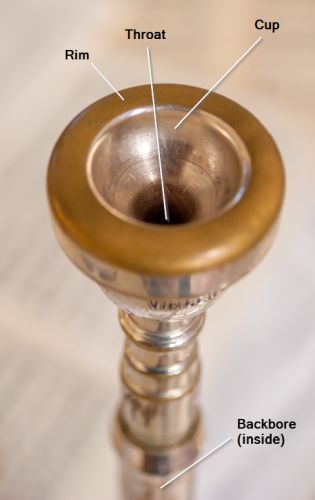
The mouthpiece is a removable part that is placed onto your lips to create the sound. There are many different versions, brands, and options when buying a new mouthpiece, and many will advertise that they can make playing the trumpet much easier. However, the best way to improve your playing is simply to keep practicing.
See our Complete Guide to Trumpet Mouthpieces
Leadpipe
The leadpipe is the trumpet part that you attach your mouthpiece to. This section needs to be cleaned regularly because of the saliva that will deposit there, which can eventually lead to rusting and even mould development if not cared for properly.
Finger Buttons
These are the buttons that you use in order to play different notes and keys. There are three buttons to each trumpet, and are played by the index finger, middle finger and ring ringer.
Little Finger Hook
The little finger hook is a small hook on the leadpipe to help you support the trumpet throughout playing. This makes for a more comfortable playing, and allows you to play one handed if necessary.
Bell
The is where the sound of the instrument comes out; it acts as a speaker and projects the sound.
Water Key
The water key is a simple valve or tap, depending on your instrument, and this allows any build up fluid and saliva to drain out of the instrument. The water key should be removed after each play and regularly cleaned to keep the trumpet in working order.
Tuning Slide
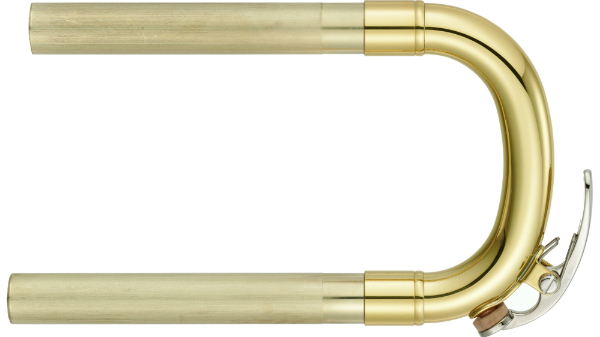
The tuning slide is a small slide that raises and lowers on the instrument, changing the key and pitch of the instrument for different songs. This should be regularly greased and maintained for proper trumpet upkeep, allowing you to change the tuning whenever you need to.
1st, 2nd, and 3rd Valve
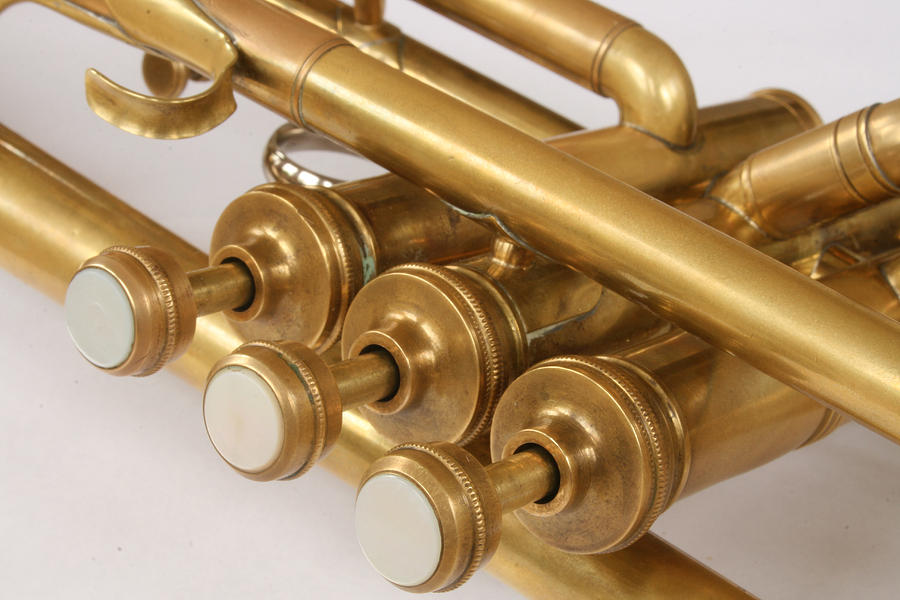
The valves are the parts underneath the finger buttons, and they help to direct the airflow through the instrument. They are protected by tubes, which also help direct the airflow, and they are a key part in changing the pitch during play.
1st Valve Slide
This part allows you to adjust the inflection of your instrument when pressing on the first finger button for a more expressive play.
2nd Valve Slide
The second valve slide is only used for cleaning and maintenance.
3rd Valve Slide
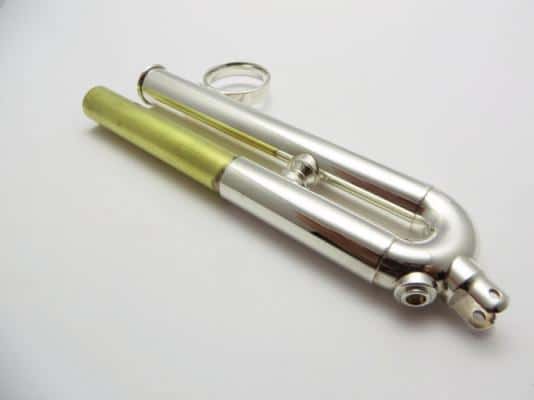
The third valve slide allows players to change the inflection of the instrument when the third valve is pressed. This allows you to reach the lower notes without creating a sharp or flat sound.
Lower Valve Caps
These caps catch any excess moisture and oils from playing or cleaning your trumpet. They are easily removed for cleaning, and should be regularly cleaned out for proper maintenance to keep your trumpet in working order.
Brace
The brace keeps all of your tuning slides aligned and in place.
How to look after your trumpet
Cleaning out your trumpet is an important part of trumpet playing and is a basic routine that you should do regularly in order to keep your trumpet in the best working order possible, and keep it producing the best sound.
To properly clean your trumpet you will need several tools and products in order to help you.
- A sink or bathtub filled with lukewarm water.
- A small amount of dish soap
- A snake* for cleaning the sides and lead pipe
- A valve casing brush*
- Slide grease*
- Valve oil*
The first thing that you should do is to get all of your tools and products together and organised to make it as easy as possible and ensure that you won’t lose anything.
1. Remove valve slides
Start by removing each valve slide. Don’t force them or use pliers and tools, simply slide them out as carefully as you can. It should be relatively easy to pull out the slides; if they aren’t then you should take your trumpet to a professional repair person. Be cautious of smaller parts that can roll and be easily lost. Set them aside in a safe place on a surface that does not let them roll, such as a towel.
2. Soak trumpet parts
Next soak all of the separate trumpet parts into the water for a few minutes and then push the snake through the tubing and rinse each part with clean water and place them on a towel to dry out.
3. Clean out the tubes
Now clean out each of the different tubes using the snake and valve casing brush, then rinse out each pipe casing and leave to dry.
4. Dry exterior
Carefully dry the exterior of the trumpet with a soft towel and allow each part to dry completely.
5. Grease slides
Before putting the trumpet back together you need to grease each one of the slides.
6. Clean valves
Once the trumpet has been reassembled you can begin cleaning the valves. Be very careful not to get the side with the felt pads wet, as this can damage the trumpet. Leave them to dry without using a towel then oil each valve.
Once this is done then the trumpet should be completely clean and ready to use.
Looking for a teacher?
Want to get lessons at the comfort of your own home? Check out the course Learn to Play the Trumpet: Beginner to Pro Made the Easy Way* on Udemy! (See their full trumpet course line-up here*!)
Conclusion
We hope that this article about trumpet parts has helped to break down and explain each part of the trumpet and helped you to better understand the cleaning processes so that your trumpet lasts as long as possible and keeps producing the best sound. Playing an instrument is great fun, and the trumpet is a great option to pick. Every musician needs to know how to take proper care of his or her instrument, and we aim to help. Happy playing!
Related Posts:
- Complete Guide to Trumpet Stands
- The Best Trumpet Cases (An Illustrated Guide)
- How To Practice The Trumpet Quietly
- Top 3 Trumpet Maintenance Tips
- The 5 Worst Things When it Comes to Playing a Trumpet (and How to Avoid Them!)
TrumpetHub.com is a participant of the Amazon Services LLC Associates Program, an affiliate advertising program. Links marked with an asterisk (*) are affiliate links. If you buy a product through an affiliate link, we will get a small commission without extra cost to you. This helps us earn an income off the free content we provide to you. Thank you for your support!

